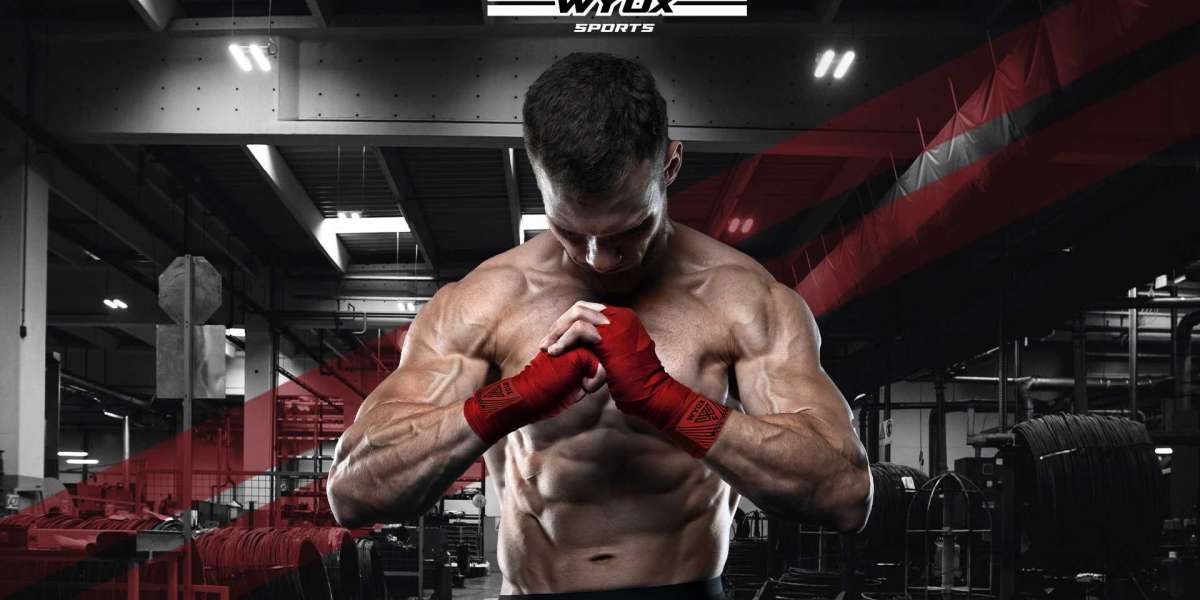When it comes to boxing, every punch starts with the hands. But while most fighters spend hours perfecting their punch technique, they often overlook one crucial element: hand protection. This is where boxer wraps come into play. These simple pieces of fabric serve a vital function in every fighter’s gear—helping protect the hands, wrists, and knuckles from injury. Not only do they safeguard your bones, but they also stabilize your hand, improving the power behind every punch. In this blog, we’ll dive deep into the world of boxer wraps, uncovering their importance, how to use them, and why they’re essential for stronger punches.
Why Boxer Wraps Are Essential
Boxing isn’t just about gloves and technique; it’s also about ensuring that your hands are properly supported. The hands and wrists are made up of small bones that are vulnerable to fractures and sprains, especially with the repetitive stress of punching. Without proper protection, these areas are prone to injury, leading to time off from training and potentially long-term damage.
Boxer wraps play a crucial role in minimizing these risks by keeping your bones and muscles tightly compacted. They help spread the force of your punches across your entire hand, rather than allowing it to be concentrated on one point. This not only reduces the risk of injury but also enhances your punching power by giving your hand more structure and stability.
Moreover, many fighters mistakenly assume that gloves alone are enough to protect their hands. However, gloves primarily absorb the impact of punches on your opponent, not on your own hands. Boxer wraps, on the other hand, provide direct protection to your hand and wrist, making them a critical component of your boxing gear.
Types of Boxer Wraps
When it comes to boxer wraps, there are several types available, each with its pros and cons. Depending on your personal preference, experience level, and hand size, you may prefer one type over another.
- Traditional Cotton Wraps
These are the most common type of boxer wraps and are often used by professional fighters. They are long strips of durable cotton fabric, usually around 180 inches in length, that you manually wrap around your hand and wrist. They offer maximum protection and can be adjusted for the perfect fit. - Elastic “Mexican-Style” Wraps
These wraps have a slight stretch to them, allowing for a snug, more flexible fit. Many fighters prefer elastic wraps because they conform more closely to the hand, offering both support and comfort. However, they can wear out faster due to the stretching. - Quick Wraps
Designed for convenience, quick wraps are slip-on wraps with built-in padding. They are great for beginners or those looking for a fast solution before hitting the bag. While not as customizable as traditional wraps, they still offer a decent level of protection.
Brands like Wyox Sports provide high-quality wraps across all categories, ensuring that you have the right gear to protect your hands during training or competition. Wyox wraps are known for their durability and comfort, giving fighters the confidence they need in the ring.
How to Properly Use Boxer Wraps
To get the most out of your boxer wraps, it’s important to know how to use them correctly. Improper wrapping can lead to loose wraps that fail to provide adequate protection or wraps that are too tight, restricting blood flow.
Here’s a step-by-step guide to ensure you’re wrapping your hands effectively:
- Start with the Thumb Loop
Most wraps come with a loop that fits around your thumb. Begin by placing this loop over your thumb and start wrapping the fabric around your wrist. - Wrap the Wrist
Make several passes around your wrist, ensuring it is snug but not too tight. The goal is to provide support without cutting off circulation. - Wrap the Knuckles
Move up towards your knuckles, making sure to spread the wrap evenly across them. This step provides protection for the bones in your hand when making contact with your opponent or a heavy bag. - Secure the Thumb and Fingers
After wrapping the knuckles, move to the thumb and then start wrapping between each finger. This helps to separate and stabilize the knuckles. - Finish with the Wrist
Return to the wrist area and finish by securing the wrap with the Velcro strap or tying it off, depending on the type of wrap you’re using.
Take your time to learn this technique properly, as well-wrapped hands will not only protect you but will also allow you to punch harder with confidence.
How Boxer Wraps Contribute to Stronger Punches
Many fighters wonder how such a small piece of equipment can impact their performance. The truth is, boxer wraps provide structural support to your hands and wrists, allowing you to punch with greater force. By keeping your hand in a secure, compact position, wraps prevent excess movement of your bones, reducing the chances of sprains or fractures while delivering more powerful punches.
Additionally, well-wrapped hands are more comfortable inside your gloves. This leads to better focus and less distraction during training or competition, allowing you to put your full strength into each punch. Wrapping your hands also ensures that the gloves fit properly, which can further enhance your overall punching technique.
Conclusion
Boxer wraps are an essential part of any fighter’s toolkit, providing protection, support, and enhanced power. Whether you're a beginner or a seasoned pro, investing in the right wraps—like those from Wyox Sports—will significantly improve your performance and help prevent injury.



